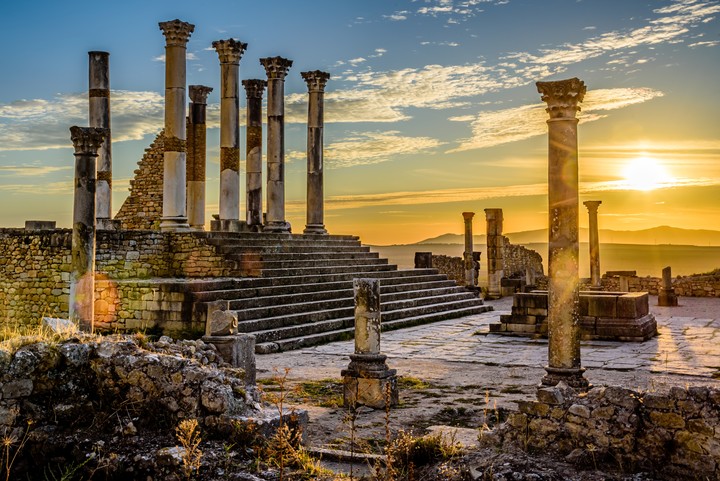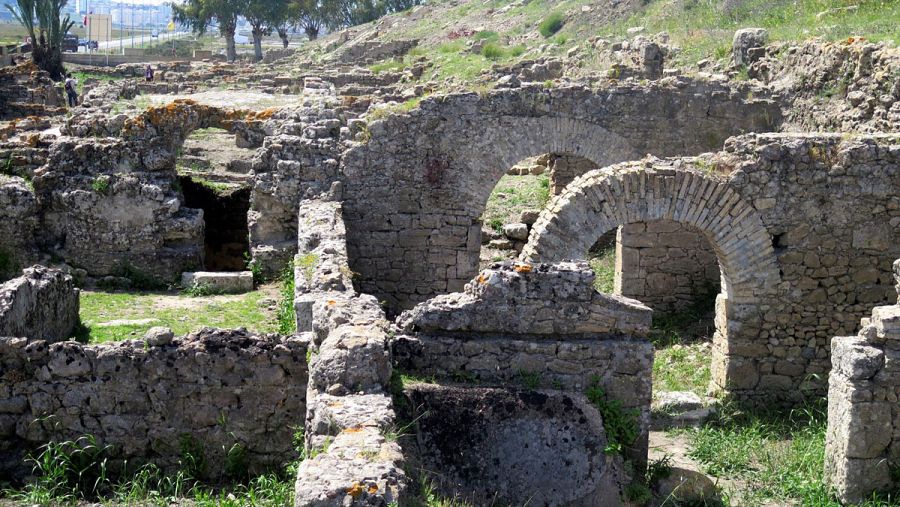Surely you have not thought of Morocco as a place to follow in the footsteps of the great Roman Empire, but the truth is that there are very interesting Roman ruins, especially near Fez.
Also, do not think that they are “four scattered stones”. In fact, they are remains of very well preserved cities to which it is worth dedicating a part of your trip if you are interested in this subject.
Follow our guide to find out where you can find the Roman ruins in Morocco and how to reach them in the best possible way.
Volubilis. The most famous Roman city in Morocco
Although it was first inhabited by the Carthaginians in the third century B.C., those who built its monuments were the Romans, who settled there in the second century B.C. The city came to have more than 20,000 inhabitants. It was not exactly a small city for the time.

The Romans decided to abandon Volubilis in 280 due to the threat posed by the proximity of the Berber tribes. In the 18th century its imposing buildings collapsed due to the Lisbon earthquake.
Then, the city was abandoned and plundered to use its materials for the construction of the palaces and houses of Mèknes.
In this city you can see beautiful mosaics such as “The Labors of Hercules” or “The Bath of the Nymphs”. You can also see the great marble arch, called“Arch of Caracara“. The baths, the forum, the basilica and the temple of Jupiter.

If you do not bring a guide, you can find them at the entrance of the enclosure for a few dirhams.
How to get there? That depends on which city you are in. Keep in mind that Volubilis is an hour drive from Fez and half an hour from Mèknes. We recommend that if you go to Volubilis you take the opportunity to visit both cities on the way.
You can stay overnight in Fez and book an excursion from there or get a private cab, asking it to stop in Méknes if you wish. If you are in Rabat, you can reach Fez by train, bus or cab.
Lixus. A nice excursion from Tangier
It is clear that the city of Lixus is not as big as Volubilis, but it also preserves many interesting remains. In addition, it is a city that dates back to prehistoric times. For that reason you will see megalithic stones in the area.
If that already sounds interesting, what if we tell you that Hercules himself was there? It turns out that Lixus is said to have been the place where Hercules performed his penultimate labor, in which he had to pick some golden apples from the Garden of the Hesperides.
If you are interested in the legend, you can also visit the Caves of Hercules in Tangier, where Hercules is said to have rested after completing this work.
Lixus was a city that, like Volubilis, was inhabited by the Carthaginians from the 6th century B.C. It was not until 45 A.D. that the Romans took it over.

In this city you can see the Tangier Gate, the Roman Forum, the Amphitheater, the thermal baths, the garum factories and the acropolis. Lixus was important for the export of“garum” and other products such as salt, olives, wine and even wild animals that were used for the shows of the amphitheaters of the time.

How to get to Lixus? The archaeological site of Lixus is only an hour’s drive from Tangier. The city of Larache is the closest, only about 10 minutes by car, although most excursions depart from Tangier. You can go in a rental car, hiring an excursion or by private cab.



